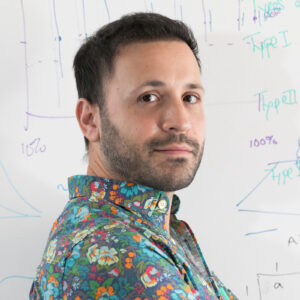AI-Driven Biomedical Discoveries Using Observational Data
Observation is the starting point of discovery. Based on observations, scientists form hypotheses that are then tested and evaluated. In the information-age, trillions of observations are being made and recorded every day – from online social interactions to the emergency room visit. With so much data readily available, generating hypotheses using a single scientist’s mind is no longer sufficient. Instead, we must turn to computational algorithms to “mine” for new hypotheses and relationships for us. Data mining is an emerging field dedicated to training algorithms to recognize patterns in enormous sets of data to automatically identify new hypotheses.
In this talk, Tatonetti will discuss how his team uses data mining algorithms to identify unexpected effects of drugs used singly and in combination with other drugs. Drug-drug interactions (DDIs) are an important and understudied public health concern. DDIs are difficult and expensive to study because of the complex combinatorial nature to their investigation. Tatonetti has developed new methods for mining clinical data and then discovered and validated two previously unknown novel drug-drug interactions. His studies are the first to use big patient data to discovery a drug interaction and then use prospective experiments to validate the findings. Using integrative informatics methods, we are able to discover drug-drug interactions that no one considered possible before. In many cases these experiments can be executed in high-throughput and by robotic systems, with the ultimate goal of automating the scientific method.
Presented by:
Nicholas P. Tatonetti, PhD

Vice Chair of Operations in the Department of Computational Biomedicine and Associate Director of Computational Oncology in the Cancer Center at Cedars-Sinai Medical Center
View SlidesNavigate the Site
2025 GoldLab Symposium
Save the date!
Please join on May 15-16, 2025Presenters In The News
Contact Info










